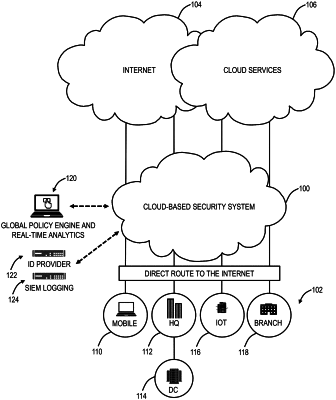| CPC H04L 43/103 (2013.01) [H04L 43/04 (2013.01); H04L 43/0829 (2013.01); H04L 43/0852 (2013.01); H04L 69/18 (2013.01); H04L 67/10 (2013.01)] | 18 Claims |

|
1. A method of adaptive probing of a service path in a network, wherein the service path includes a plurality of legs, wherein the plurality of legs includes a first leg from a user device to an egress router and a second leg from the egress router to a node, the method comprising:
for the plurality of legs, sending a number of probes using a combination of protocol types or one of a plurality of protocols;
responsive to receiving a response from the plurality of legs based on the number of probes, determining one of the plurality of protocols is more favorable for each of the plurality of legs based on the protocol that has the highest probability of getting a response;
responsive to failure to receive the response, sending a number of probes using another one of the plurality of protocols to each of the plurality of legs that did not respond, and continuing until a successful protocol is determined for each leg or all of the plurality of protocols fail, wherein the sending includes sending a number of probes using a combination of protocol types from a connector application executing on the user device to the egress router and sending a number of probes using a combination of protocol types from the node to the egress router;
storing the successful protocol for each of the plurality of legs for future use; and
aggregating results for all of the plurality of legs to determine details of the service path, wherein at least two of the plurality of legs used a different protocol from one another.
|